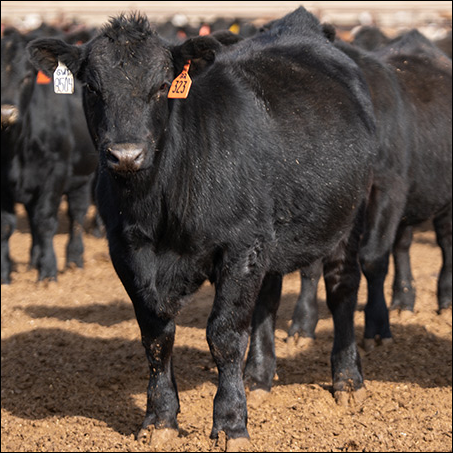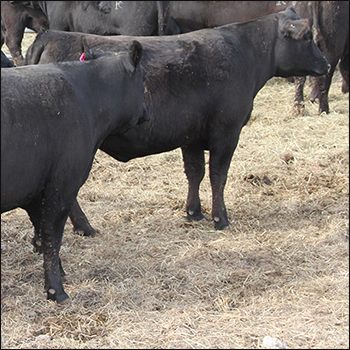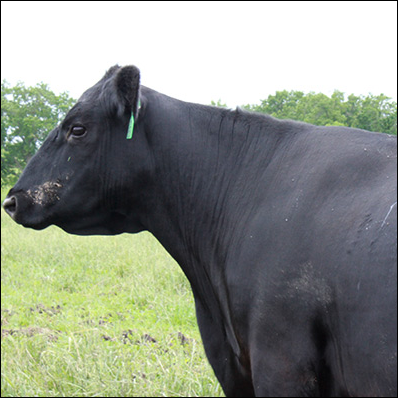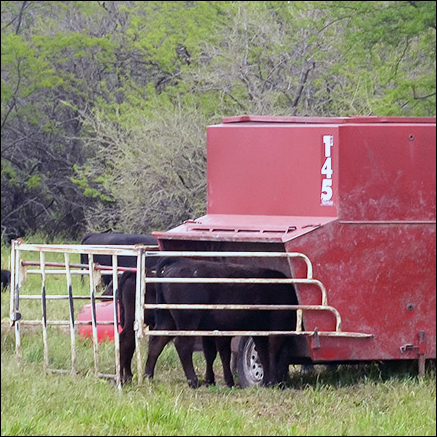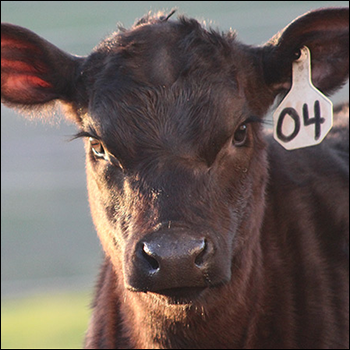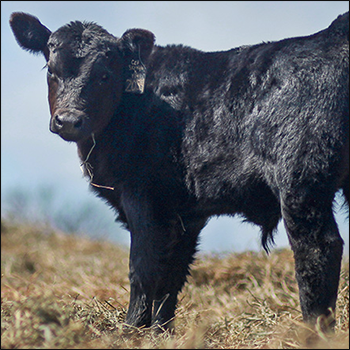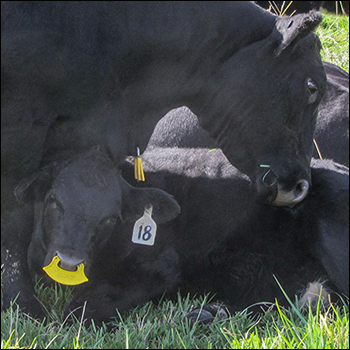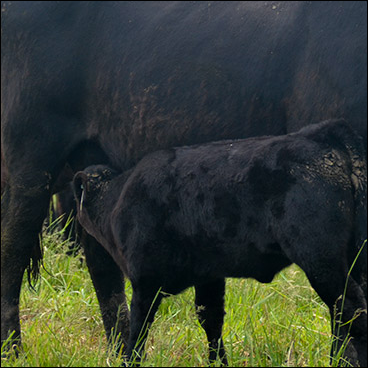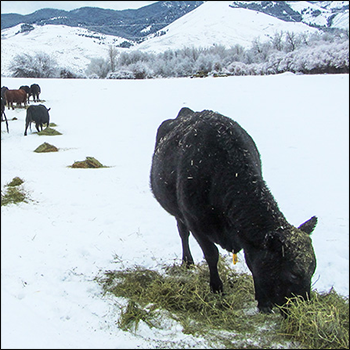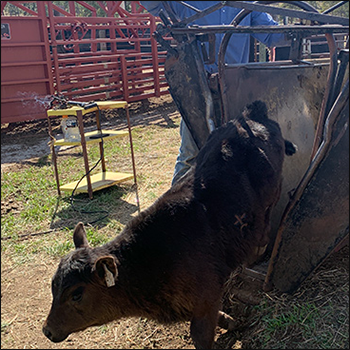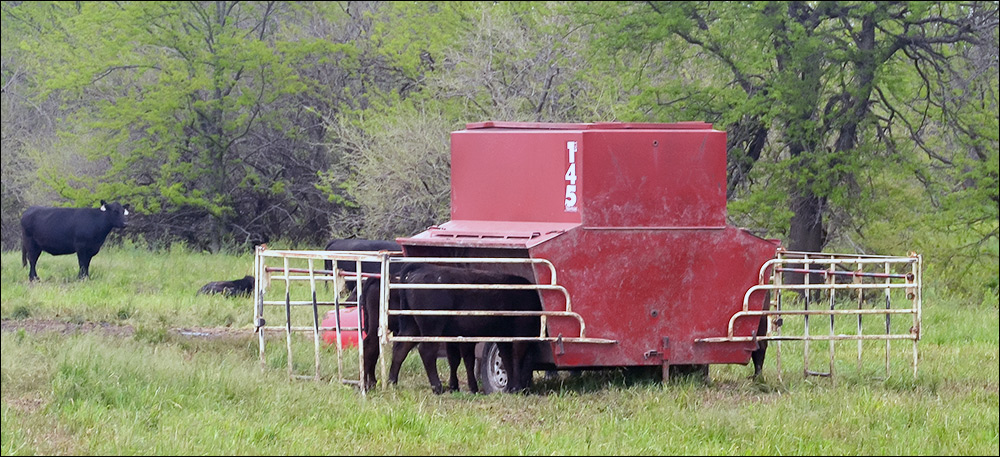
Commercial Creep-feeding?
Why creep-feeding rarely pencils out for commercial cattlemen.
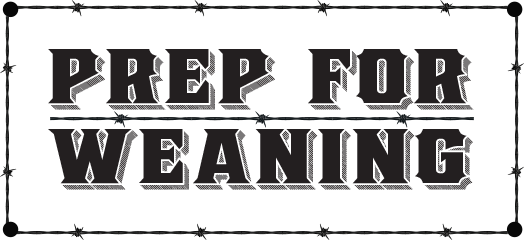
Occasionally the question of whether creep-feeding is a cost-effective practice comes up. The simple answer for commercial cow-calf operations is “not in most circumstances.” This is particularly true for spring-calving operations. Calf weaning weights can be increased anywhere from about 20 pounds (lb.) to 80 lb. However, in most cases, the value of added weight gain will not cover the added feed, labor and equipment costs, unless feed is exceptionally inexpensive and/or when the value of added weight gain is exceptionally high.
For example, in a summary of 31 experiments in which calves had unlimited access to creep feed, average increased calf weaning weight was 58 lb. Average creep feed conversion was 9 lb. of additional feed to 1 lb. of added calf weight gain. Assuming bagged creep feed could be purchased for $275 per ton, or $0.1375 per lb., the feed cost per 1 lb. of added weight gain is about $1.24. In a recent Oklahoma Department of Agriculture Market News report, value of added gain between 527-lb. steers and 575-lb. steers was about $0.86. If the creep feed could be purchased in bulk for about $240 per ton, the feed cost per lb. of added weight gain decreases to $1.08.
In a recent Nebraska study, spring-born calves were fed creep for 105 days prior to weaning. In this study, labor, equipment, transportation and depreciation costs for the creep-feeding enterprise were estimated at $28.38 per calf, or about $0.27 per head per day.
Conversion efficiency can range from 3 lb. to 20 lb. of feed required per 1 lb. of added weight gain. High-quality, abundant forage results in very poor feed conversion because one high-quality feed (forage) is being replaced by another. Similarly, the greater the plane of maternal nutrition, the poorer the conversion of creep feed to calf gain. In our fall-calving experiments, efficiency of creep-feed conversion to calf gain is quite good because native range forage quality is low, and cows are in a maintenance to negative energy balance (losing weight).
Our results have been around 4.5 lb. to 5 lb. creep feed:gain when fall-calving cows are getting about 5 lb. of supplemental feed. However, the more supplement the cow is fed, the poorer the creep-feed conversion. Situations that reduce calf nutrient availability — low milk production, low-quality forage, overgrazed pastures and thus low forage availability, drought, fall-calving, etc. — improve the efficiency of creep. The opposite is true, as well. In general, limiting creep intake improves creep-feed conversion substantially. This is especially true with low-quality forage and protein-rich creep feeds limited to 2 lb. to 3 lb. of intake per day.
Another consideration is the flesh condition of calves that are marketed at weaning. The longer calves are exposed to unlimited creep consumption and the lower the forage quality, the more they want to eat. If calves are fed free-choice creep for 90 days or longer, there is a risk of overconditioning leading to a market discount. On the positive side, if heavy creep-fed calves go straight to the feedyard for finishing, carcass weights and, in most studies, marbling scores are improved.
Occasionally, the thought surfaces that creep-feeding “takes the pressure off the cows.” The assumption is that calves consume less milk; therefore, cows produce less milk and have more nutrients available for maternal tissue maintenance or even weight gain. This is simply not true. Most experiments that track cow weight change and calf milk intake show that calves consume all the milk available, whether they are fed creep feed or not. Creep feeding simply does not change or improve cow weights or body condition.
Calves prefer milk first, palatable creep feed second, then forage. Consider that the intensity of creep feed and forage consumption is elastic and opposite. The lower the quality of the forage, the more creep feed and less forage calves want to consume and vice versa.
Not all beef cattle producers make this decision based on the economics at the time of weaning. For example, seedstock producers likely have entirely different objectives when it comes to creep feeding. Chief among those include marketing and expression of genetic potential for growth.
Creep feeding has been studied in the animal science field for many years, and there is quite a lot of good data available. Hopefully, some of these fundamental concepts will be helpful the next time conditions warrant considering this practice.
Editor’s note: David Lalman is a cow-calf specialist for Oklahoma State University Extension. This article is reprinted with permission from the Cow-Calf Corner newsletter. Photo by Kasey Brown.

